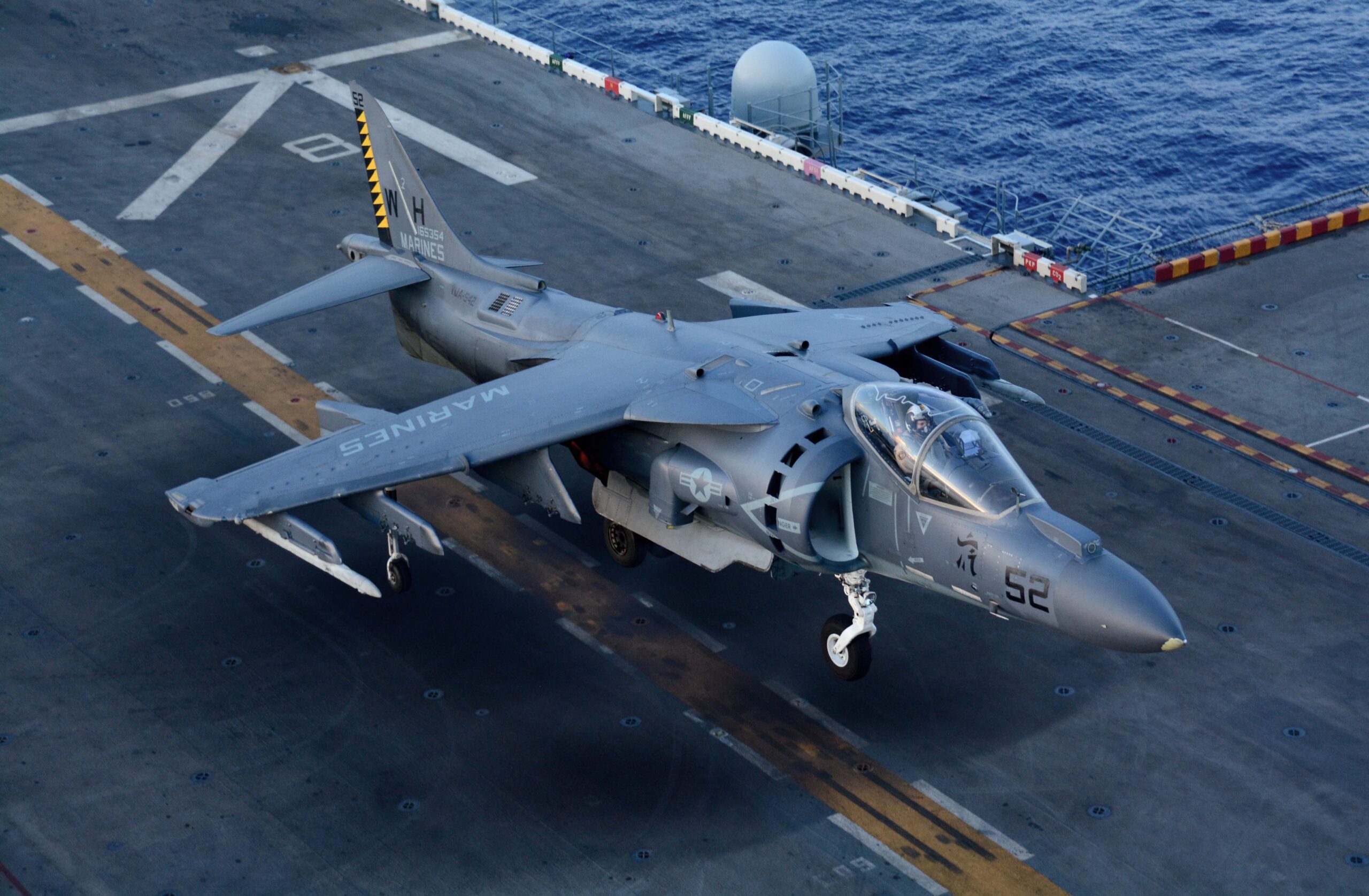Fleet Readiness Center East (FRCE) has completed final sustainment work for the US Marine Corps AV-8B Harrier II ground attack aircraft two years before the fleet’s retirement.
The maintenance is part of the North Carolina-based center’s technical support, repair, and overhaul coverage for all naval and expeditionary aviation assets.
It concluded in an informal ceremony involving the delivery of the aircraft to Marine Attack Squadron 223, a unit at Air Station Cherry Point that oversees fixed-wing combat aircraft operations.
The US Marine Corps Harrier II fleet reached operational capability in 1971 and is now being replaced by the F-35 Lightning II fifth-generation fighter jet, which entered the service in 2015.

“It’s an honor to lead a facility with such a remarkable legacy,” FRCE Commanding Officer Capt. Randy Berti remarked. “For five decades, FRC East has been a cornerstone in supporting the Harrier program for both the Marine Corps and our nation’s international allies.”
“Our AV-8 platform’s success is directly attributed to the hard work and dedication of multiple generations of FRC East employees. I am proud of all this team has accomplished throughout the years and I look forward to what’s next.”
Continuing Assistance for ‘New Technology’
As the Marines move forward from AV-8s, FRCE will continue supporting all requirements of other platforms, including the new F-35 fleet.
“We must evolve by improving our technology and tactics,” FRCE Aircraft Overhaul and Repair Supervisor Mike Stewart explained. “F-35 is that new technology; it’s how we keep up and move to the future.”
“Although the AV-8 is a great aircraft, it has served its purpose. It’s time to move on to the newer weapons platforms with more capabilities.”
FRCE is the largest sustainment hub in North Carolina, with over $1 billion in revenue annually and about 4,000 military, civilian, and contract personnel.
The AV-8B Harrier II
Developed by McDonnell Douglas, the AV-8B Harrier II is primarily deployed for intermediate-range intercept and attack missions as well as close air support.
The plane’s airframe measures 46 feet (14 meters), and its wingspan is 30 feet (9 meters).
It is equipped with mounted rotary cannons, precision rockets, air-to-air and air-to-surface missiles, cluster, laser, and unguided bombs, drop tanks, and electronic jammers.
Harrier II is powered by a Rolls-Royce Pegasus engine for a top speed of 673 miles (1,083 kilometers) per hour and a range of 1,400 miles (2,253 kilometers).












